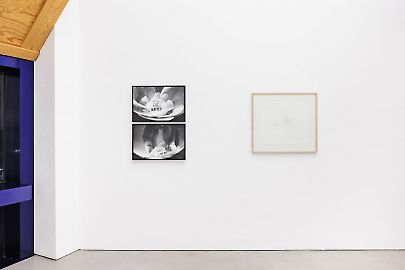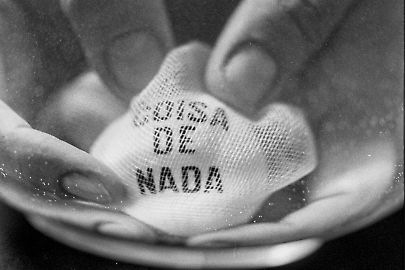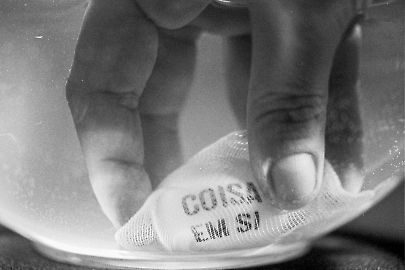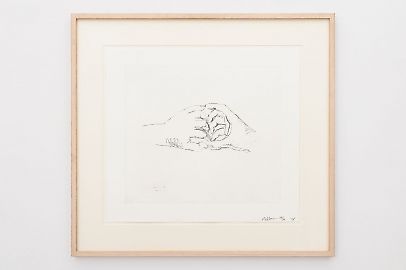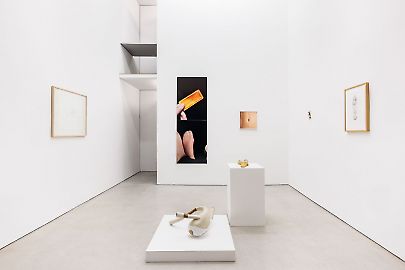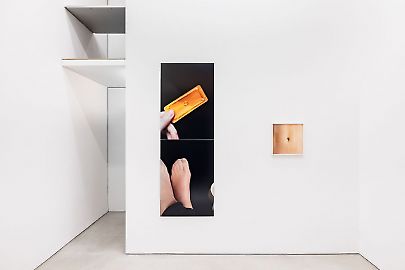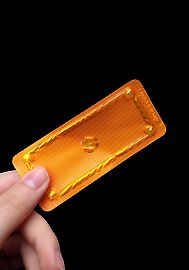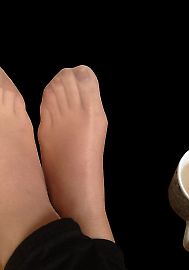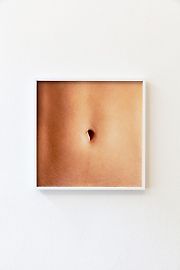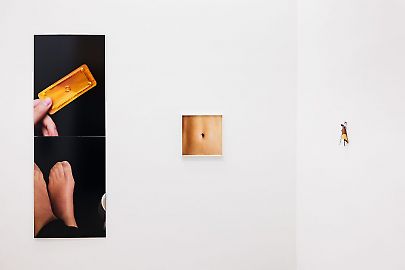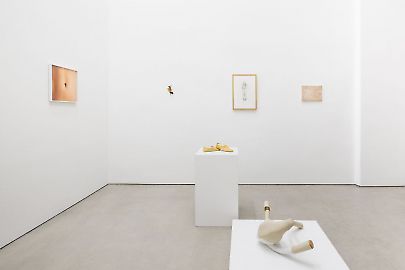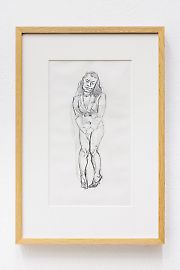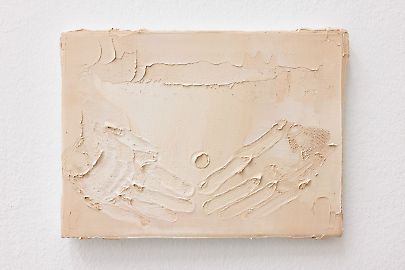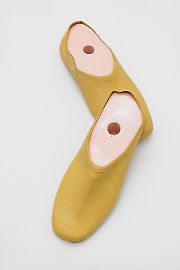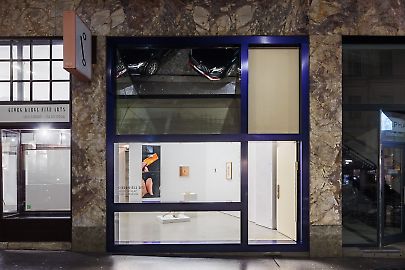Body at Play --
Lenora de Barros, David Fesl, Denisa Lehocká, Mercedes Mangrané, Bruce Nauman, Paula Rego, Rosa Rendl, Willem de Rooij, Camila Sposati
It could be easy to reach for a philosophy related to the body’s figurative representation in the group exhibition Body at Play, as the technologies, tools, and symbols within the artworks all stand in relationship to the body. Here the language of the body does not arise through its figuration but rather unfolds its sensual essence and silent meanings in front of the viewer, a hidden process that gives expression to the works. In this way, the artworks reach us in various manners, affect and refract upon us a chorus of meanings that emerge in the act of encounter.
Lenora de Barros released the photo series COISA EM SI / COISA DE NADA in 1990 on the occasion of her solo exhibition “Poesia é coisa de nada” at Mercato del Sale in Milan. She integrated elements of the ping-pong game to support poetic and visual experiences that explore playful and interactive aspects.
10 fingers 2 holes by Bruce Nauman belongs to a group of the artist’s graphic works from the 1990s in which he dealt intensively with hands as motif. The etchings are based on drawings in which the artist drew his right hand with the left hand and vice versa. Seemingly simple shapes and gestures undermine an inner complexity. Bruce Nauman also used these motifs in various other works.
‘The series wasn’t about the holes at first and then I saw that that was going on. So, I started thinking about that – about topology. Things that don't look alike morphose one into the other. Topology is about surface: the coffee cup and the donut are the same.’ (Quoted in Bruce Nauman: Fingers and Holes, p.3.).
In Stay Calm, Rosa Rendl engages with the imagery of social networks. The divergence between private and public has become part of our lives. Where boundaries could arise, the artist dissolves them. This staged reality, which is an expression of subjectivity and desire, mobilizes a romantic conceptualism that conveys an analysis of our contemporary visual culture.
An analytical approach to the production and consumption of the image is characteristic of Willem de Rooij's oeuvre, in which experience is defined by the presence of the body.
Artificial leather, ebony beads (Diospyros crassiflora), a plastic-coated metal wire, a snail shell (Cornu aspersum), sealing foil from wine bottles, a stainless-steel cone, stretch film, voice recorder components - found objects and artifacts fixed with hot glue and a cotton thread - are harmoniously put together in Untitled by David Fesl. Each of these individual parts undergoes a metamorphosis as a whole, creating a homogenous morphology.
The richness of romance and human misery allows one to explore the boundaries and limitations of existence. There is poetic truth in both the darkness and the light of consciousness. In her works, Paula Rego presents human reality and imagination, its viciousness and complexity, to reveal the dogmatic truths of existence. In her artworks, people and their nature's chaotic instability become visible to create ruptures.
"I start from small formats, partly because the body asks me to, it's the best solution I have found so far, a matter of scale with the body itself. Also, the themes of my paintings depart from a non-specified origin, they are quite ambiguous even though they start from the world, they deal with banality, marginal things, the space we inhabit (not always within the dichotomic logic of the inside-outside... but the interstice ...) hence the small format has an affinity with the unspectacular."
Mercedes Mangrané (2020)
Gut by Camila Sposati is part of her series of works titled Phonosophia (phonos: voice/sound; sophia: knowledge), which she developed from her Earth Anatomical Theater.
Like many of the artist's recent sculptural works, this one can be placed at the border between sculpture and musical instrument. Its form is reminiscent of internal parts of the human body, while its materiality is directly derived from the earth's body - both central protagonists in Camila Sposati's oeuvre. The object functions simultaneously as an autonomous presence, a container for future use, and a site of activation, as well as a relational entity connecting different embodiments, spaces, and times.
Denisa Lehocká reacts to reality with a selective process in which she filters it.. She chooses a singular moment, the event in between... which she processes internally. In Shoes on the Floor from 1997, an everyday object - a ready-made - is transformed into a pure, austere form and cast by the artist with skin-colored plaster.



